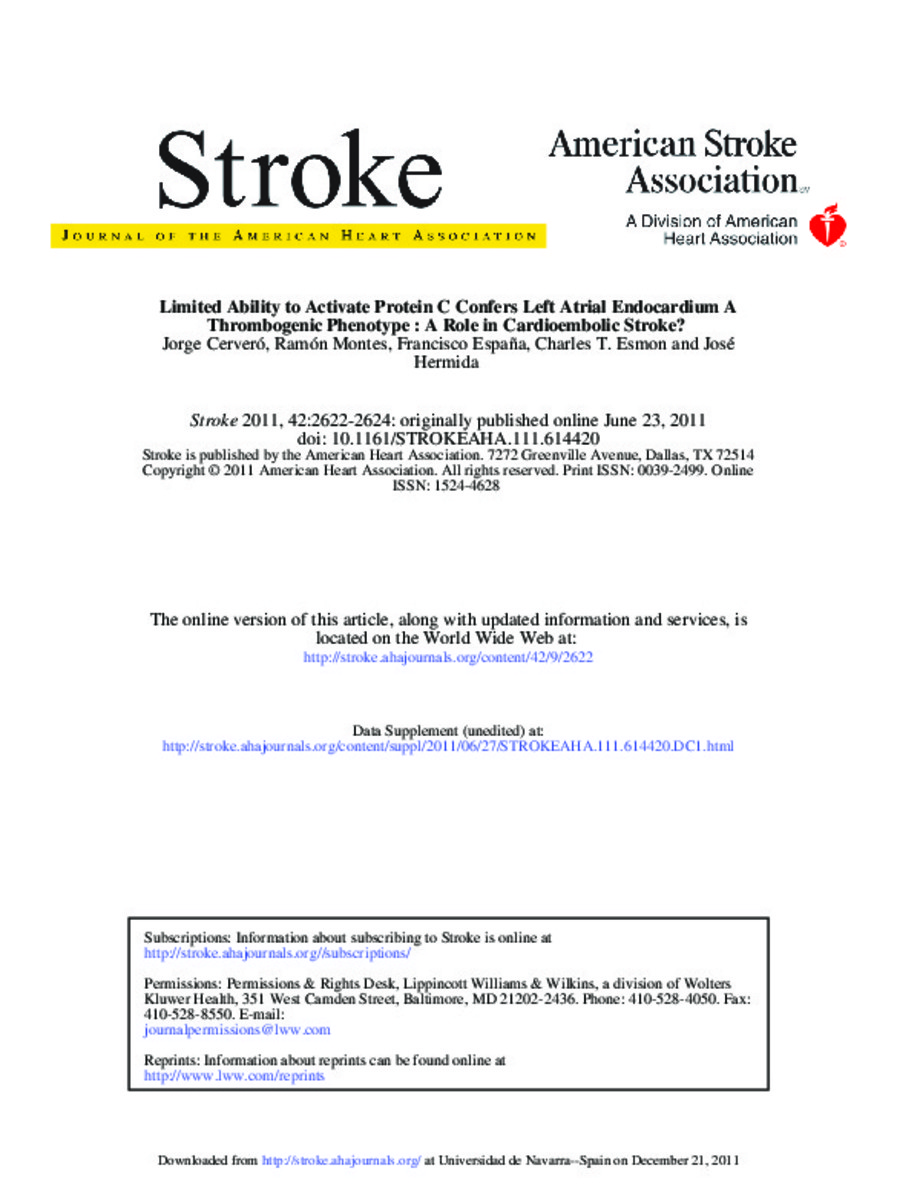Limited Ability to Activate Protein C Confers Left Atrial Endocardium A Thrombogenic Phenotype: A Role in Cardioembolic Stroke?
Keywords:
Anticoagulation
Embolic stroke
Embolism
Endothelium
Protein C anticoagulant system
Thrombomodulin
Publisher:
American Heart Association
Citation:
Cervero J, Montes R, Espana F, Esmon CT, Hermida J. Limited ability to activate protein C confers left atrial endocardium a thrombogenic phenotype: a role in cardioembolic stroke? Stroke 2011 Sep;42(9):2622-2624.
Statistics and impact
0 citas en

0 citas en

Items in Dadun are protected by copyright, with all rights reserved, unless otherwise indicated.







